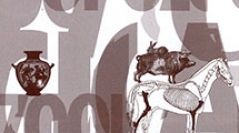

 Anthropozoologica
47 (2) - Pages 15-29
Anthropozoologica
47 (2) - Pages 15-29Milk draws its substance from a living being of flesh and blood and from plant matter full of scents, through a two-cycle digestive system and fermentation in vivo, that of ruminants, which are also animals that provide meat (“you drink my milk, you eat my meat”). The pig, the “outlaw” of domestication for milk production, escapes the rules and may be viewed in different ways, giving rise to human disagreements. The relationship involved in human suckling may go as far as the forming of language through facial communication with the mother, but it is quite different in animals. The sharing of blood through the placenta is replicated in the relation of human maternal milk to extra-specific milks, producing a special relation with the animal, a familiarity such that killing it becomes murder and requires a moral contract with a necessary higher authority to create a particular purpose for it in the institution of sacrifice. The presence of plant substance in milk relates it to plant juices and sugars (the words lactose and fructose are evocative, and lactic acid may be considered a central element), to communication effected through higher levels of perception (scents, flavours, colours) and the search for a milk tree appears as a “quest for the Holy Grail” where almond milk marks a stage; it appears, the more one goes towards the rising sun from the Occident, the more the plant metaphor, soya, plays a role.
anthropology, domestication, milk